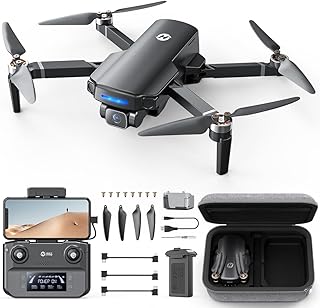Artificial Intelligence and Drones: The Future of Autonomous Flight
The convergence of Artificial Intelligence (AI) and drones is rapidly shaping the future of autonomous flight, revolutionizing industries and impacting our lives in profound ways. Here's a look at the key aspects of this transformative synergy:
AI's Role in Drone Autonomy:
* Navigation and Path Planning: AI algorithms, particularly deep learning, enable drones to navigate complex environments autonomously. They analyze real-time data from sensors like cameras and LiDAR to create 3D maps, detect obstacles, and plan efficient flight paths, even in challenging conditions like dense forests or urban landscapes.
* Object Recognition and Tracking: AI algorithms empower drones to identify and track objects of interest, ranging from specific individuals to moving vehicles. This is crucial for applications like search and rescue, surveillance, and delivery.
* Decision Making and Control: AI enables drones to make complex decisions in real-time based on gathered information. For example, they can adjust their flight path to avoid obstacles or change their mission parameters based on changing environmental conditions.
* Data Analysis and Interpretation: AI can analyze massive amounts of data collected by drones to generate insights that can be used for various purposes, like predicting weather patterns, monitoring crop health, or analyzing infrastructure damage.
Transformative Applications:
* Delivery and Logistics: Drones are already delivering packages in limited areas, and AI will further enhance efficiency and safety. Drones can navigate complex urban environments, optimize routes, and even deliver to specific locations within buildings.
* Search and Rescue: AI-powered drones can autonomously search for missing persons in disaster areas, scan vast territories, and relay vital information to rescue teams.
* Agriculture: Drones can analyze crops, identify pests and diseases, and apply targeted treatments, optimizing resource use and increasing agricultural yields.
* Infrastructure Inspection: Drones equipped with AI can inspect bridges, power lines, and other infrastructure for damage, enabling quicker and safer assessments.
* Surveillance and Security: AI-enabled drones can monitor large areas, detect suspicious activity, and provide real-time security alerts, contributing to public safety.
* Environmental Monitoring: Drones can collect data on air quality, water pollution, and deforestation, providing critical insights for environmental conservation.
Challenges and Ethical Considerations:
* Safety and Security: Ensuring the safety of autonomous drone operations is paramount, particularly in densely populated areas. AI algorithms must be robust and reliable, able to handle unexpected situations and prevent accidents.
* Privacy and Data Security: The collection and use of data by AI-powered drones raise serious privacy concerns. Strict regulations and ethical guidelines are needed to protect individual privacy and prevent misuse of data.
* Regulation and Legal Framework: As drones become more sophisticated and autonomous, existing regulations may not adequately address the new challenges. Developing clear legal frameworks is essential to ensure responsible use and prevent unintended consequences.
* Job Displacement: The widespread adoption of autonomous drones could lead to job displacement in certain sectors, requiring retraining and reskilling programs to mitigate the impact.
The Future of Autonomous Flight:
AI and drones are poised to transform various industries and significantly impact our lives. As the technology continues to advance, we can expect even more innovative applications, from autonomous air taxis to advanced disaster response systems. However, it's crucial to address the challenges and ethical considerations associated with this technology to ensure its safe and responsible use for the benefit of all.
The future of autonomous flight will be shaped by the constant interaction between AI innovation, regulatory frameworks, and ethical considerations. This is a rapidly evolving field with enormous potential, promising both opportunities and responsibilities.


